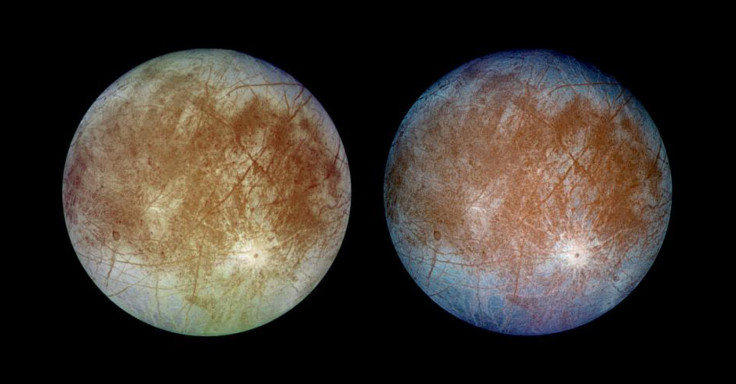Jupiter’s Icy Moon Europa May Have Ocean Under Its Surface That Could Support Life

Scientists have found a fractured, ice-covered world with signs of a liquid ocean under the surface of Jupiter's moon Europa, which, they believe, could help microbial life thrive, and are working to put together the necessary information to launch a mission to confirm this theory.
In a quest for life on icy Europa, a group of scientists at NASA have authored a new study, laying out their consensus on the most important questions to address when a robotic lander is sent to the moon's surface for research.
“Europa is the most likely place in our solar system beyond Earth to have life today, and a landed mission would be the best way to search for signs of life,” Robert Pappalardo of NASA's Jet Propulsion Laboratory in Pasadena, Calif., and the lead author of the study, said in a statement on Wednesday.
According to Pappalardo, a lot of preparation is required before a spacecraft can land on Europa’s surface. However, he believes that studies similar to the one in question would help scientists focus on the technology and information required to scout possible landing locations on the alien surface.
“If one day humans send a robotic lander to the surface of Europa, we need to know what to look for and what tools it should carry,” Pappalardo said.
Europa, which is slightly smaller than Earth's moon, is thought to have an iron core, a rocky mantle and a surface ocean of salty water. However, unlike on Earth, Europa's ocean is deep enough to cover the entire surface of the natural satellite, and being far from the sun, the ocean surface is frozen.
Discovered by Galileo Galilei in 1610, Europa orbits Jupiter every three-and-a-half days. And, although it is located about 485 million miles away from the sun, "tidal heating" causes Europa to be warmer.
The new study, published in the journal Astrobiology recently, was authored by scientists at NASA and other universities, including the Johns Hopkins University Applied Physics Laboratory in Laurel, Md.; University of Colorado, Boulder; University of Texas, Austin; and the NASA Goddard Space Flight Center in Greenbelt, Md.
According to NASA, the scientists involved in the study were focused on finding out more about Europa’s composition. For instance, what makes up the reddish "freckles" and cracks that mark the icy surface? What kind of chemistry is occurring there? Are there organic molecules, which are among the building blocks of life?
Scientists also are looking for more information about Europa’s geological activity and the presence of liquid water, NASA said.
“Landing on the surface of Europa would be a key step in the astrobiological investigation of that world,” Chris McKay, a senior editor of the journal Astrobiology, said in the statement. “This paper outlines the science that could be done on such a lander. The hope would be that surface materials, possibly near the linear crack features, include biomarkers carried up from the ocean.”
© Copyright IBTimes 2024. All rights reserved.












